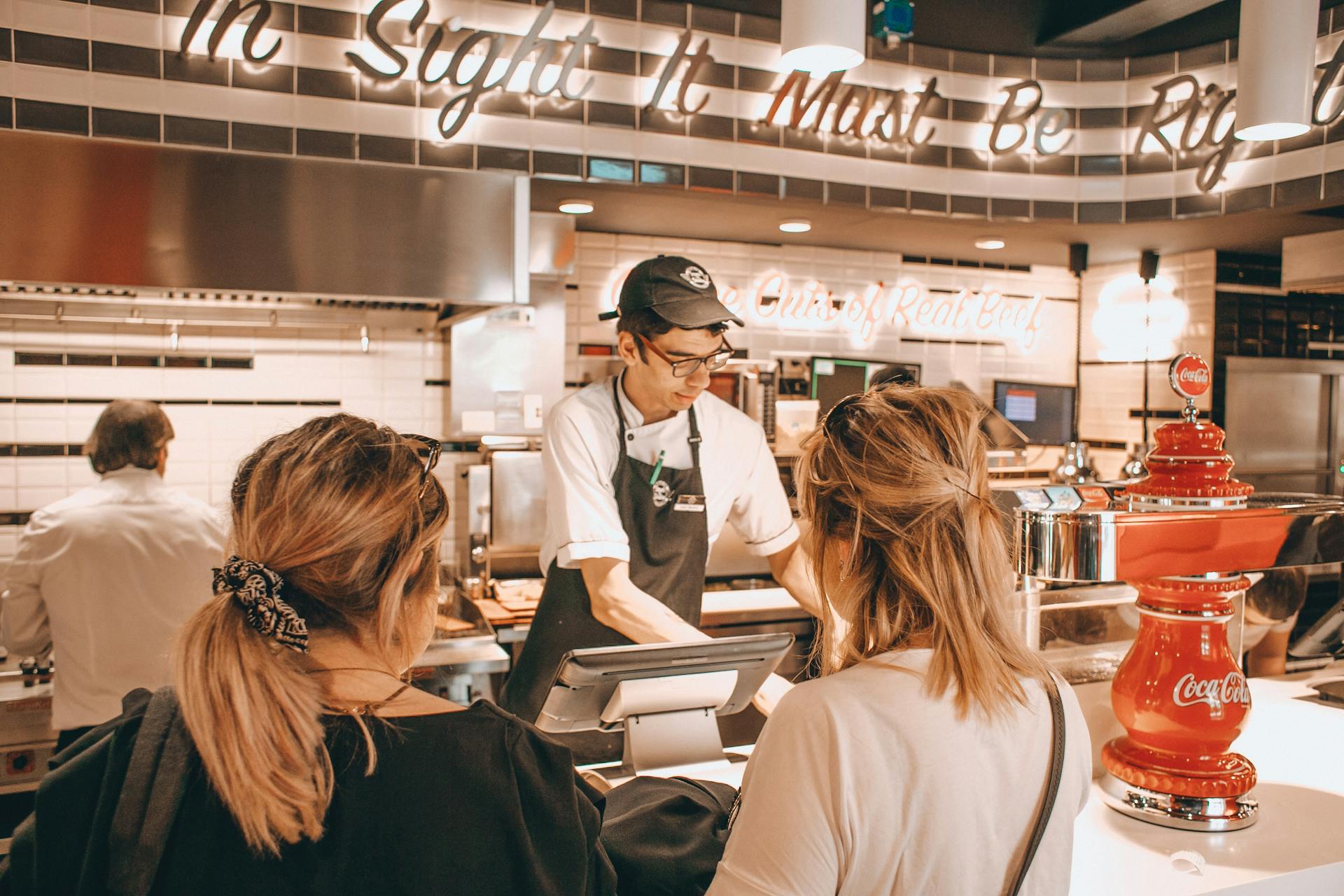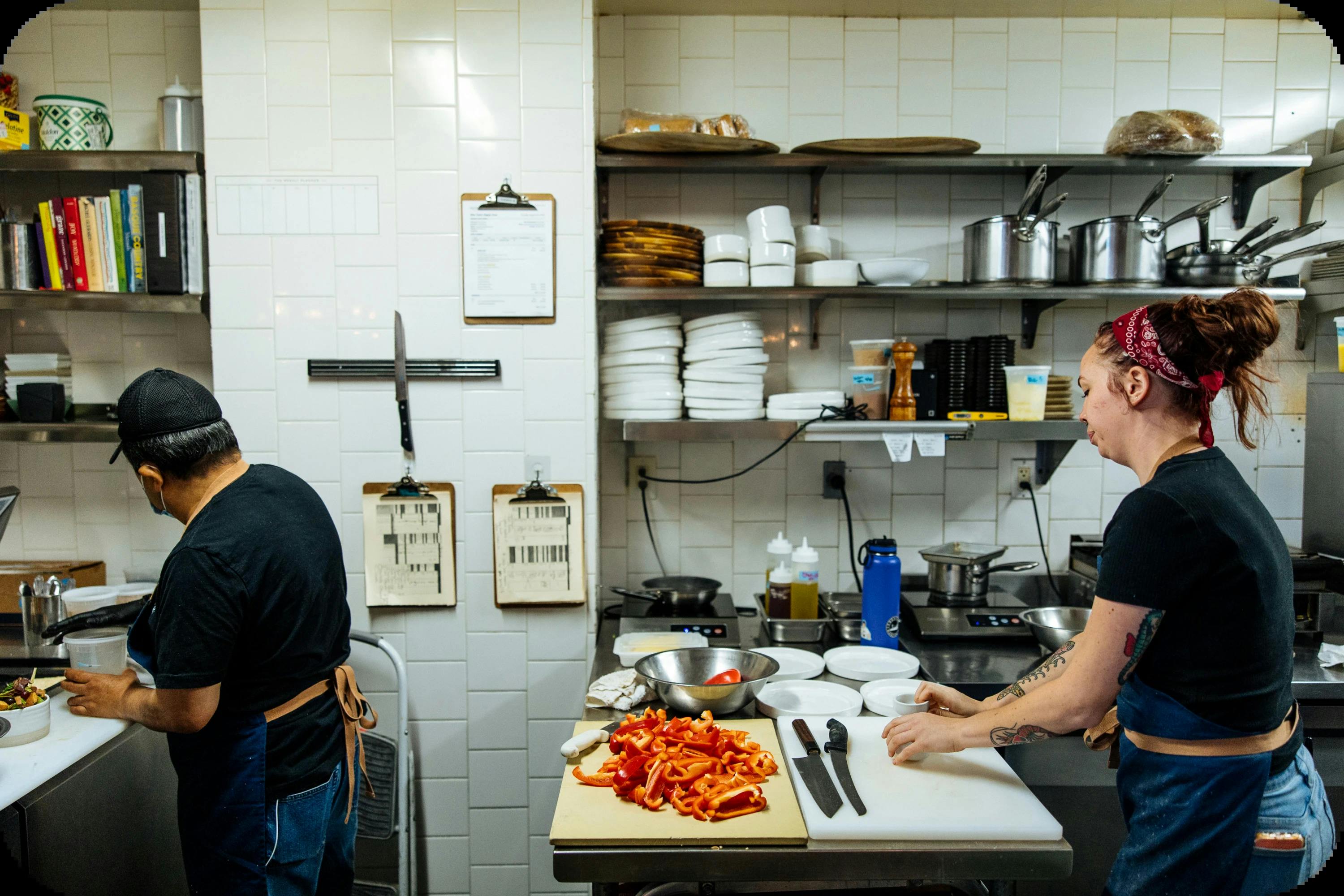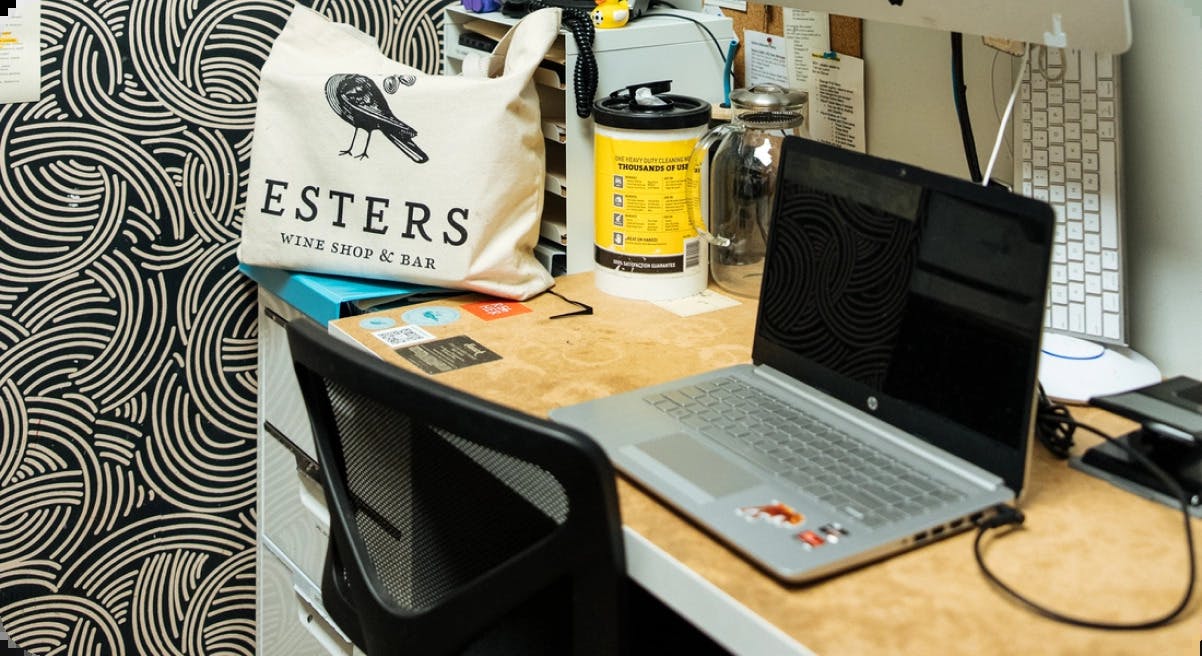
Turnover is expensive, especially in a time when industries are already feeling the squeeze from labour shortage as competition for labour intensifies worldwide.
What the stats say about the labour crunch:
- In Australia, job vacancies have doubled as the labour market recovers from the two-year pandemic hiatus with a 111.1% increase in job vacancies and unemployment rates at an all-time low of 3.5%.
- The low supply of workers left almost one third of businesses in Australia struggling to find suitable staff.
- Making it into the top 3 among industries with the biggest absolute number of job vacancies, the hospitality industry now has over 50,000 jobs waiting to be filled.
As good food and quality service (the key to every successful business) both require skilled employees, restaurant owners like you might find yourselves in dire straits. Not to mention the ongoing challenges the industry is up against, including the record high inflation rate and ever rising food prices.
For restaurant owners who have their fingers stuck in too many pies, staff retention is especially crucial in surviving the labour crunch. In this article, we’ll cover some of the steps your restaurant can take to improve staff retention and deal with labour shortages.
What this blog covers:
- Why is there a labour shortage in the hospitality industry?
- What does the labour shortage mean for your restaurant?
- How can your restaurant overcome the labour shortage and improve staff retention?
- Using technology to improve staff retention.
Keep reading to find out how you could rethink your staffing strategy and be able to fill jobs to keep your business going!

Why is there a labour shortage in the hospitality industry?
We know the pandemic has impacted the labour situation, but with most parts of the economy in recovery, why aren’t restaurant workers coming back? Let’s dig into some possible factors:
1. Migration freeze. Border closures and the departure of working-holiday makers and international students contributed a major part to the labour shortage in Australia. The shortage is especially acute in the hospitality industry which relies heavily on international students working part time as waiters, kitchen hands and bar attendants to make up a huge proportion of the workforce. With roughly 335,000 international students in Australia now, which is only half as many as the pre-pandemic days, competition for workers in the industry is no doubt more intense than ever.
2. People opting for self employment. The pandemic has driven the self-employment rate worldwide because of the early stage pay cuts and layoffs. In Australia, 1 in 10 people have started their own business and 4 in 10 said they would choose to own their own business if they have the opportunity. With more and more people opting for self employment, the number of workers available in the labour market has significantly decreased while the demand continues to surge.
3. The challenging work and long hours. As a restaurant owner, you know better than anyone that it’s a tough job. The nature of the service industry means that restaurant workers are working when others are enjoying their weekends and holidays. People are moving into new industries because of the fast paced and demanding job nature, resulting in the current labour shortage situation.
4. Lack of competitive compensation. While the take-home pay for restaurant workers has been on the rise because of the labour shortage, hourly wages in many restaurants are still typically lower than other service industry sectors.
What does the labour shortage mean for your restaurant?
With fewer front-of-house workers and kitchen staff, your restaurant is unlikely to operate like before. You would think that a labour shortage means spending less on employees, but the reality is that you will feel the impact of the labour squeeze across your operations, especially in these scenarios:
1. Longer wait time for customers. With the return of foot traffic and delivery sales being consistently high, the result is that table turns will slow down as there are fewer hands to help around your restaurant. Customers would also have to wait longer for their food to be served as kitchen staff juggles between dine-in and delivery orders.
2. Reduced opening hours. For some restaurants, not having enough workers to fill the shifts means reduced capacity and shorter opening hours. As a result, restaurants are unable to maximise their profits and could also lose loyal customers in the long run.
3. Profit margins could shrink. Your restaurant sales would definitely feel the impact with fewer operating hours and lower table turnover rate. On top of that, the increase in employee wages to retain current employees would ultimately impact your bottomline.
4. Staff leaving for better offers. Competition is strong in the industry as restaurant owners try to overcome the labour squeeze. Restaurants are sweetening their offers with higher wages and attractive perks to recruit new staff. At a time where there are fewer job seekers in the market, replacing your workers can be really costly, which is why it’s important for you as a restaurant owner to become an employer of choice.

How can your restaurant improve staff retention to combat shortages?
There are many ways to overcome the labour shortage, and retention is right at the top of the list. Considering the time and costs that go into training new staff, your best bet is to keep your experienced team on the ground! From QSRs to local businesses, here are some ideas to help your restaurant stand out as an employer:
1. Reevaluate your employee compensation strategy
We’ve talked about how tough life in the restaurant service line can be, but what’s more is that the job is often viewed as a temporary occupation with a lack of career advancement opportunities. Despite that, working in the restaurant industry can still be incredibly fulfilling, especially if the pay is good.
With the industry-wide shortage, your competitors are offering higher hourly wages and even bonuses to attract new talent. At a time where high turnover can cost you unnecessary time and money, you might want to look into your existing compensation rate to retain your top performing employees even though broadening your spend on payroll may seem daunting.
2. Look into non-monetary employee retention strategies
An increment is not the only way you can retain your employees. Consider offering employees fringe benefits such as a personal development plan, career advancement opportunities, health insurance and flexible schedules that will boost employee retention.
On the other hand, when turnover is unavoidable, set up an exit interview to learn about workplace concerns and find out how you could further strengthen your retention strategies for future employees.
3. Ensure a positive workplace culture and make sure your team feels supported
Better pay and alluring benefits can get employees in the door, but to retain your best employees, ensuring workplace satisfaction is something you should prioritise. Set aside time to chat with your team from time to time to make sure that they are heard and provide them with the support they need to cultivate a positive workplace culture.
For example, consider giving your employees more control over their schedules. The freedom to accept or decline a shift helps them maintain work-life balance, and in return, keeps them happy at work.
Offering cross-training programs is another good way to boost job satisfaction among your employees. Not only will employees see this as a good opportunity for career progression, it can also boost productivity around your restaurant when employees are better skilled.
Using technology to improve staff retention
When we talk about using tech to help your restaurant succeed, it isn't always complicated or hard to keep up with. Restaurants have been turning to tech, especially in the past couple of years to streamline operations and optimise delivery businesses.
From online ordering to order management solutions and more, the team at Otter is here to help you make the most out of tech to simplify your workflow and keep employees happy.

1. Streamline restaurant operations with order aggregation
Maintaining a successful delivery business in addition to on-premise operations can result in inefficiencies, errors and increased stress levels for your team. Order Manager helps your employees take control of delivery by consolidating all your orders into one tablet.
The order auto-acceptance feature can also help cut down your headcount since you no longer need someone manning multiple tablets to watch for orders coming in. Ultimately, you can also find all your delivery performance data, order history and details all in a single dashboard to help you understand and improve your delivery business.
2. Save time and labour costs with your own online ordering system
There's so much to do in the restaurant, and with the current labour crunch happening, its likely that your employees are also feeling the squeeze with longer working hours and hectic shifts.
This is where an online ordering solution like Direct Orders can step in to help take some load off you and your employees by sending orders directly to the kitchen. Direct Orders also offers a contactless order-to-table solution for in-house dining which is perfect for businesses struggling to fill front-of-house positions.
3. Increase quality of life for your employees with integrations
The grind is real for restaurant workers, and with the current labour shortage, employees can easily end up overworked. By integrating your POS system with Otter, your point of sale and online orders are consolidated into a single system to increase operational efficiency and save your staff time on manually entering orders.
Calling out the wrong order? Forgetting an item modifier a customer requested? Say goodbye to all of that. Now you and your staff never have to worry about sending the wrong orders out the door.
It's more important than ever now for you to keep your top performing employees to ensure the smooth running of your business. Not only that, focusing on retention can also improve your teams morale and boost productivity, and from there, increase customer satisfaction as well as restaurant sales. After all, great service begins with happy servers!
Getting through this labour crunch will continue to be a challenge for any business owners out there. We hope this guide helps you breeze through it with staff retention tips and operational improvements.